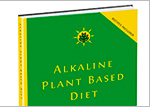Interstroke Study Identifies Risk Factors For Stroke – Stroke Is Preventable
Dr. Martin O’Donnell and his colleagues have identified 10 risk factors for stroke that are responsible for 9 out of 10 strokes worldwide. Certain risk factors for stroke had stronger or weaker associations with stroke depending on the region stroke was associated with.
The “Interstroke” study[1] revealed stroke was largely preventable and was due primarily to lifestyle choices.
The study involved 26,919 participants from 32 countries including Asia, America, Europe, Australia, the Middle East, and Africa.
10,388 of the participants had an ischaemic stroke and 3059 had an intracerebral hemorrhage (a burst brain vessel). 13, 472 participants were part of the control group with no history of stroke.
The study had serious implications because stroke is a leading cause of death and disability in low-income and middle-income countries.
Ischaemic and hemorrhagic stroke are the two major types of stroke. Ischaemic stroke accounts for 85% of strokes and is caused by blood clots. Hemorrhagic stroke accounts for 15% of strokes and occurs when a blood vessel bursts in the brain.
10 Risk Factors for Stroke
The study identified hypertension as the most important modifiable risk factor across all regions, and was the key target in reducing stroke globally. The researchers calculated the population attributable risk for each factor (PAR) to determine how the elimination of each risk factor would reduce cases of stroke.
- Hypertension – PAR 48%
- Lack of physical activity – PAR 36%
- Lipids (the study used apolipoproteins, which was found to be a better predictor of stroke than total cholesterol) – PAR 27%
- Poor diet – PAR 23%
- Waist to Hip Ratio (obesity) – PAR 19%
- Psychosocial factors (stress) – PAR 17%
- Smoking – PAR 12%
- Cardiac (heart) causes – PAR 9%
- Drinking alcohol – PAR 6%
- Diabetes – PAR 4%
The risk factors for stroke combined for 9o% of stroke cases worldwide. Hypertension was the highest risk factor across the board and was 40% in Western Europe, North America, and Australia, but 60% in Southeast Asia.
The other risk factors swapped positions depending on the region. Alcohol risk was lowest in Western Europe, North America and Australia, and highest in Africa and south Asia. Physical inactivity was highest in China.
An irregular heart rhythm was a high risk factor for ischaemic stroke in all regions, but was of greater importance in Western Europe, North America and Australia.
Find out more about foods to eat to avoid stroke on the Dr. Sebi Nutritional Guide »
[1] Martin J O’Donnell, PhD et al. Global and regional effects of potentially modifiable risk factors associated with acute stroke in 32 countries (INTERSTROKE): a case-control study. The Lancet, July 2016 DOI:






